Media | Articles
Auto Anthro: Why luxury trucks don’t have luxury badges
Jack Swansey holds a degree in anthropology with a focus on car culture, and he is the world’s leading ethnographic authority (by default, if you must know) on NASCAR fandom. His love of the automobile fuels him to discover what cars mean to the people who own, drive, and love them. —EW
According to Kelley Blue Book figures as of October 2022, the average sale price of a new full-size pickup truck is $63,231, up 9.4 percent over last year, and nearly $9500 more than the average price of an entry-level luxury car.
Over sixty-three thousand dollars. That sum could cover a generously optioned BMW M340i or Porsche Macan—and that’s the average sale price. Ford’s top-of-the-line F-150 Limited costs just north of $85,000 before options, and certain trim lines on heavy-duty trucks crack six figures. Stuffed with leather, premium sound systems, and advanced tech features, these luxury pickups are about as far from the ordinary white work truck as a pigeon is from a peacock.

Why are Americans so willing to spend luxury-car prices on pickups from mainstream brands while the same product from a premium nameplate flops? Lincoln’s Blackwood and Mark LT couldn’t make it more than four collective model years while every Ford King Ranch that rolls off the line has a willing buyer.
There might be an anthropological explanation for this phenomenon. Hear me out: We Americans like trucks—and luxury trucks, in the proper context—in concert with our country’s deep-rooted Protestant work ethic.
Marketplace
Buy and sell classics with confidence
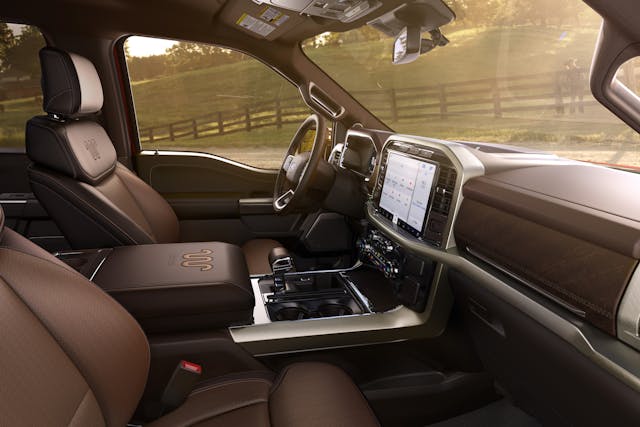
The phrase “Protestant ethic” was first used by the early 20th-century German sociologist Max Weber, but he was not the first to recognize the American society’s emphasis on the moral character of hard work. Alexis de Tocqueville marveled at the same phenomenon a century earlier. The Puritans considered economic success reflective of God’s favor. Even colonial Jamestown settler John Smith commanded: “He who will not work shall not eat.” From the very beginning, a pseudo- or openly religious glorification of labor has informed the way Americans interact with the world and each other.
The Protestant ethic is reinforced by the structure of our economy, the policy of our government, and yes, heroic national myths like the winning of the frontier. What started as Puritan religious dogma morphed into Gilded Age “bootstrap” fables, and eventually into the idealized blue-collar workers of Chevy’s “Like a Rock” ads. The ethic survives, changing with the times.

If there is one vehicle reflective of American values, it’s the trusty pickup truck. This is a machine that offers immense versatility and inherent practical value to the worker, but in the United States it has also come to represent significant value in the social hierarchy. Anyone who has felt the warm embrace of a GMC Denali interior knows that these are proper luxury vehicles—save for the badge.

Modern American culture in 2022 is much more diverse and multifaceted than it was in the 17th century, or even the early 20th, but the Puritan legacy is still evident. In many traditional circles, hard work is regarded as a fundamental moral good, while displays of wealth are considered vulgar. No matter how much money someone makes, carrying a camping pack through the woods, setting up a tent, cooking beans on a campfire, and sleeping under the stars makes people feel satisfied. Connected to nature. Blue jeans, although they were originally marketed as a uniform for miners in the California Gold Rush, have thoroughly permeated American fashion from the most basic threads to $300 raw denim.
Let’s go a step further. We’ve established that Weber’s Protestant work ethic considers labor to be a moral obligation, a commandment even. To watch the Super Bowl is to be inundated with marketing that idolizes hard work, the pickup truck its towering, mulch-hauling, stump-pulling symbol. Hard-hat-wearing miners, construction workers, and farmers treat trucks with generational reverence. Physical labor is often dirty and physically demanding, of course, though not always cinematically so. It’s a cliché, but only because it’s rooted in something real. Advertisers didn’t make it up to sell Trail Boss–emblazoned floor mats. Like independence and self-reliance, hard work—physical or otherwise—is an American value already underlying the stories many of us tell ourselves about ourselves and our country.

Consider that from our nation’s beginnings as a British colony well into the 20th century, most Americans still lived and worked in rural communities. The American economy transitioned rapidly to modern capitalism while our society was still mostly agricultural; our mainstream national values remain laced with the rugged individualism that characterized Thomas Jefferson’s ideal yeoman farmer. Today, the proportion of Americans who make their living via agriculture has never been slimmer. Truck manufacturers nevertheless still trade on the cultural pull of that figure. You may remember Ram’s “God made a farmer” commercial from back in 2013. One could argue we are now more a nation of contractors than growers, but the fact remains that tons of people still do serious physical labor, and they rely on their pickups—even the luxury models—to make their living.
https://www.youtube.com/watch?v=AMpZ0TGjbWE&ab_channel=RamTrucks
***
“Wait a minute,” you’re probably asking, “I get why people want trucks, but not why they’re willing to pay Mercedes-Benz prices for them.” Ah, but Weber has more to add on that subject:
“[The Puritans] did not wish to impose mortification on the man of wealth, but the use of his means for necessary and practical things.”
This is the crux of it. A truck is an infinitely practical device for work, and therefore, the ethic tells us, worth paying for. Even if a four-door pickup truck is primarily used for passengers, groceries, and sports equipment, it can do something a Lexus RX can’t: haul a sheet of plywood or tow a 25-foot cabin cruiser on a moment’s notice.
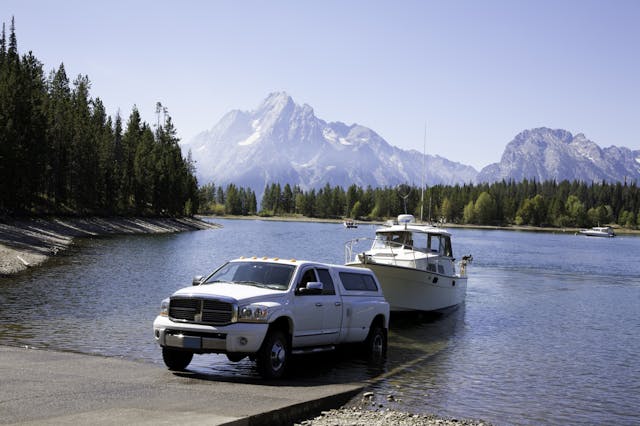
Conversely, high-trim American trucks are some of the most luxurious and stately vehicles on the road. (Not to mention how well they’re engineered.) Comfort features are often generous, and GM’s CornerStep bumpers, Ram and GMC’s multifunction tailgates, and Ford’s Pro Power Onboard electrical system combine technology and convenience in an everyday-usable package. Saving the day in a power outage, pulling a car out of a ditch, or hauling a new refrigerator from Lowe’s might not happen every single day, but the Protestant ethic puts a lot of value in even the potential for practicality. When the need arises, renting a truck from a company or calling up a friend … just hits different.
Finally, we return to the text on the tailgate. Think back again to Lincoln’s Blackwood (2002) and Mark LT (2006–2008). Ford Motor Company moved just 36,187 Lincoln Mark LTs between 2005 and 2009, against 796,039 F-Series trucks in 2006 alone. One can easily imagine that of nearly 800,000 Ford trucks sold, more than 36,000 were optioned highly enough to at least match the price of the Mark LT.
The reason people won’t accept a Lincoln truck is the same reason VW knows it will never figure out how to sell the Amarok in America, and why Mercedes never even tried with the short-lived X-Class.
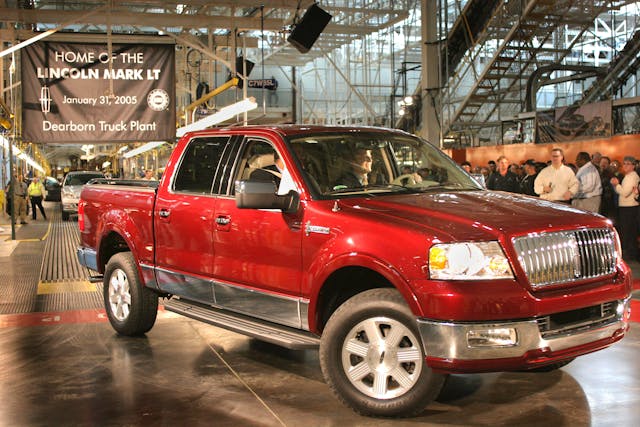
Weber again:
“[To the Puritans], irrational use [of wealth] was exemplified in the outward forms of luxury which their code condemned … this worldly Protestant asceticism … acted powerfully against the spontaneous enjoyment of possessions.”
Dominant historical American values disapprove of outward forms of luxury. Outward luxuries, that is. But when it comes to inward luxuries, like the “Heated and Ventilated Leather Front Bucket Seats with Active Motion” available on the 2022 F-150 Platinum, that’s another story. As long it has a bed, wears a Ford badge on the hood, and looks enough like the base model, it might as well be the Waldorf Astoria inside. A luxury truck is a rational purchase so long as it stays a Ford, Ram, Chevy, or even a GMC. An Escalade EXT pickup? Well, that’s just showing off.
As a non-truck-owning amateur anthropologist, it is my duty to point out that every single vehicle purchase is influenced by cultural and social forces—conscious or otherwise. This isn’t inherently good or bad, it’s just reality. Our culture in America today is diverse, nuanced, and at times contradictory. Certain aspects of it are inescapable.

The Ford Maverick, a four-cylinder unibody minitruck sales phenom, suggests that the social forces driving Americans towards trucks aren’t limited to full-sizers. And despite the hate they sometimes get from truck purists, the Rivian R1T, Ford F-150 Lightning, and Chevrolet Silverado EV are being met with considerable demand. Which tells us that the values people associate with pickup trucks are not inextricably linked to internal combustion.
Detractors will contest that the current crop of full-size trucks isn’t great for pedestrian safety, the atmosphere, or urban street parking. Proponents will fire back that no vehicle meets their various needs so effectively and reliably, and people who don’t understand that probably never will. The debate is so interesting and persistent perhaps because it is a larger societal conversation in miniature—the long-dominant Protestant work ethic being poked at, examined, and weighed against other perspectives. Such scrutiny is a common enough social phenomenon, historically speaking.
For my part, I think there is nothing fundamentally wrong with desiring a high-end vehicle if you can afford it, or a vehicle with extraordinary utilitarian potential for those moments you need it, be that once a week or once a year. Dropping Macan money on a Silverado doesn’t make a whole lot of sense to me personally, but the market at large thinks otherwise. Regardless, it is fascinating the way we showcase (or don’t) our ideas about work and luxury in the vehicles we drive.
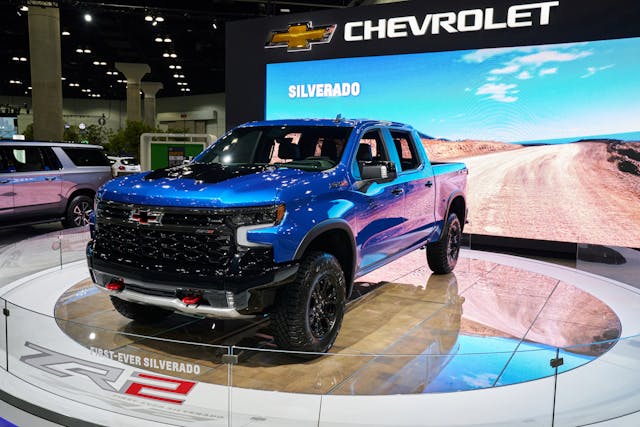
Check out the Hagerty Media homepage so you don’t miss a single story, or better yet, bookmark it.
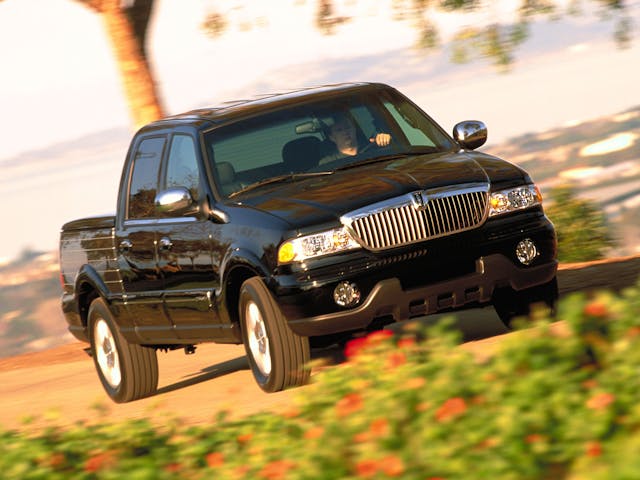






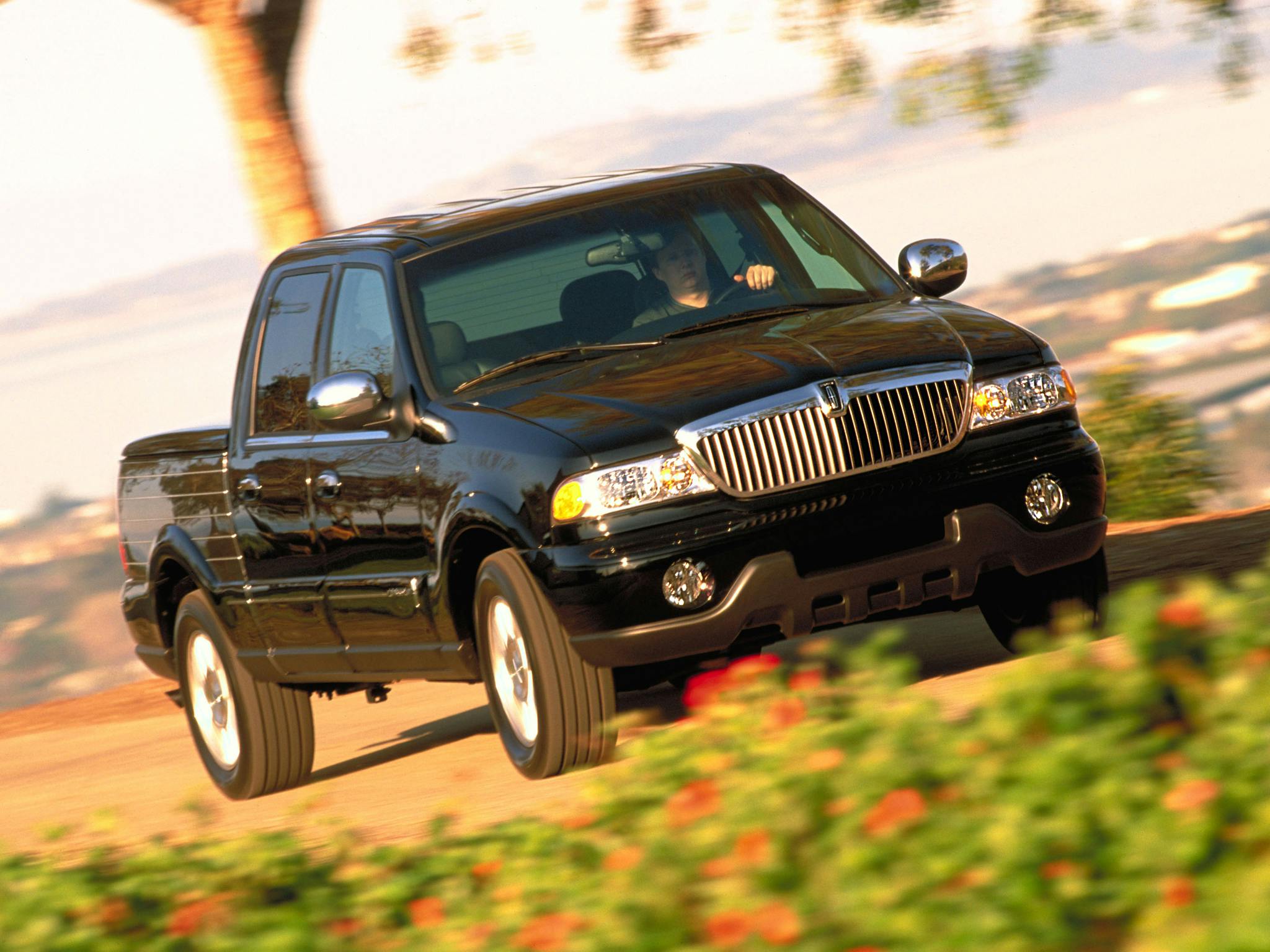
This year I bought a 1 of 50 Neiman Marcus edition Blackwood for less than a Civic. Yup, it was overpriced when new and is limited in the rear bed, but it’s great looking, rare, has the heated & cooled seats and food compartment and tows 8700 lbs of boat, horse trailer, or in my case a rare ‘49 Lincoln convertible on a trailer with ease.
How many people buy these huge trucks (and SUVs), and they will never be used for anything more challenging than a trip to the grocery store or the golf course? In the mean time, they are a danger to everyone around them. For normal car drivers: They can’t be seen around in traffic or parking lots. Their headlights are eye and rear-view mirror level. They add to congestion. Many are driven rudely. So many owners are driving over their children that we now will all be mandated to have safety cameras in front of our cars. They will cost a fortune to put snow tires on, so most people will make do with large expensive bald tires 5 years-on. These people are pretending to have some sort of rugged work ethic when they are actually self-important victims of the manufacturer’s marketing. I have had large trucks when I needed them for work, but they were WORKING TRUCKS.
I smell the next political rallying cry : “they’re trying to take our trucks !” Let’s hope not, as that may even be more of quagmire than the gun debate.
As another commenter suggested , economics will be the only thing to change the market. High interest rates, fuel and insurance costs are going to eventually shrink the full-size truck market. There are several new small and mid size truck offerings . Hopefully these will fulfill our desire to show our Protestant work ethic and masculinity.
The main reason the sale price of trucks has risen is the limited amount of chips. The big three are using the available chips to build the most expensive vehicles. If you need a new truck, you don’t have much choice but to buy what is available.
My needs are so varied that a new full size (overpriced electronic laden garbage wagon) disguised as a pickup is not practical (not to mention financially stupid). I own everything from a motorcycle to a couple of class 8 trucks (with about 20 vehicles in between). They each serve a need and I get every job done that I need to.
If I ever had to go to just one truck type vehicle, it would be my full size Chevy van.
I drive a 25 year old F150 with a 4.6, 2 doors, a short bed, and manual 4wd with an AOD. Every weekend it goes out to “camp” and down ranch roads that sometimes need 4wdlow. I use it for work driving all over south Texas getting 16 mpg. The maroon paint is heavily sunburnt but the interior looks good and it drives good. I travel and rent vehicles frequently including pickups and I still prefer my old truck which has cruise control an electric windows but not much else. I did put a radio with blue tooth and Sirius because there are plenty of radio dead spots in Texas, but the rentals don’t always have the same. Lane departure, active cruise, start stop, keyless start and key fobs are answers that only a marketing guru would ask. By the way the ‘97 is my new truck, I have a’64 ranchero that gets driven quite a bit.
This is a car enthusiasts site so I’d never expect there to be many truck lovers here- you put your money where your interest is. But I’d guess if you race you’ve probably got something to haul your race rig with, if you’re like me and you race off-road- well it’s probably a lifted 4×4 after you’ve been pulled out of sand, mud or snow a few dozen times. If you live in the north of Minnesota and you swing into that 2’ of unplowed parking lot with a triple-axle sled trailer and 6 snowmobiles then it’s 38’s and lockers front and rear. 8’ bed so you can close the gate with a full-size ATV or motorcycle in it. Diesel so with a trailer I can make it over Vail pass going to Moab. There you have it- I’m your “obnoxious” full-size lifted diesel truck guy just because of my usage patterns. Oh and I’ll pull you out of the ditch too Mr SUV because sh_t happens.
I miss the old days when pick ups where plain and cheap.
Take a lesson in practicality and humility from the guy who was the richest man in the USA, Sam Walton.
He drove his old red & white Ford long bed custom cab with faded paint and dents and dings daily. He was quoted as saying. “What am I supposed to haul my dog in, a Rolls Royce?”
I pretty much feel the same about mine. I constantly get offers to buy it, but then I would have to find another one so why bother.
I resolved the need to occasionally haul by buying a ‘52 Chevy pickup 12 years ago. It has some rust, but still presents well and is in great shape mechanically. It has served me well in hauling mulch, furniture, appliances, and trees for planting. I eliminated overspending on one of those ostentatious vehicles, plus I get a thumbs up at every stop, and it only appreciates in value as the years pass.
…which explains why drivers of these truck-shaped, ten-foot tall living rooms enter parking lots at 3/10 mph.
It’s clear the pickup is no longer designed with the needs of small business operators in mind. If it was it would be about a foot lower, so any normal size human could climb into the bed or even reach over the side to put things in or pull out a power tool or a couple of 2×4’s. If the new pickups were built to be practical they would be accessible to most humans, many of whom now need a step stool or running boards to even get into the passenger seat. If pickups were designed to be long-lived tools they would have ways to take care of simple maintenance jobs like checking the fluids under the hood. What logic is there in a vehicle so ungainly and oversized that I have to get a two step folding ladder to check the oil?
These aren’t practical tools with luxury fittings – they are cartoonish monsters that seem to cater to Americans’ need for the biggest, flashiest thing around. The 59 Cadillac revisited.
Always interesting (and potentially horrifying depending on how close to them you happen to be parked) to watch people try to navigate and park these behemoths and having to drive behind one of them hogging the passing lane because they are afraid to make a lane change is always an education as well.
I have an old 88 GMC (easy to fix, easy on gas, and easy to see out of) that gets used when real work needs to be done and an old E39 540 wagon that also gets things done with a bit of refinement, style, and class while driving and handling like a proper road car.
‘Luxury trucks’ just don’t make sense to me.
“He who will not work shall not eat.”
Those days are long gone. Now He who will not work tries to make He who works feel guilty for providing for himself.
My Ram 3500 cost $32000 in 2016 with 34000 on the clock. Today it has 62000 miles, KBB states it is worth a lot more than the $32000 I paid in 2016. Local car dealers call and send mail, trying to convince me to sell, nope.
I plan to have this truck until the end. I wouldn’t pay $85,000 for another one.
Only one other person hit on a crucial point: the ground clearance. Sure, you can get your Outback to the camp spot, but you’ll be stressed out the whole time, burn up your tranny, and probably at least scratch the exhaust tip and the front lip. And forget about it if it’s a 3-series instead of an Outback. In a truck you’ll get there unscathed, whether blasting up a forest road or crawling up a rocky trail.
Additionally, those of you saying your SUV or van can perform all the same tasks, you’re missing the value of cargo separation. Separating dirty things is good, in the case of mulch or car parts. Separating stinky things is near-necessary, in the case of elk quarters or vapor-venting fuel sources. But beyond that, there’s a safety aspect – in a hard braking situation, you don’t want those parts coming through your windshield. There’s also a climate comfort element – you only need to heat your cab, but instead you’re heating all your cargo too, which takes a hell of a lot longer!
Jack you need to drive a truck for one month….. and you will never go back. I agree the new price issue is insane. find a good used one. My first truck was a 48 Chevy in 1978 and i’ve never been without one since.